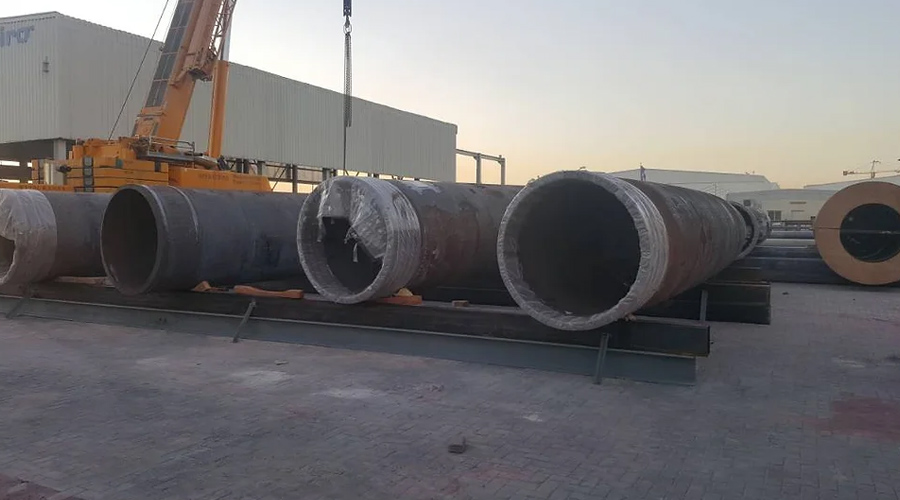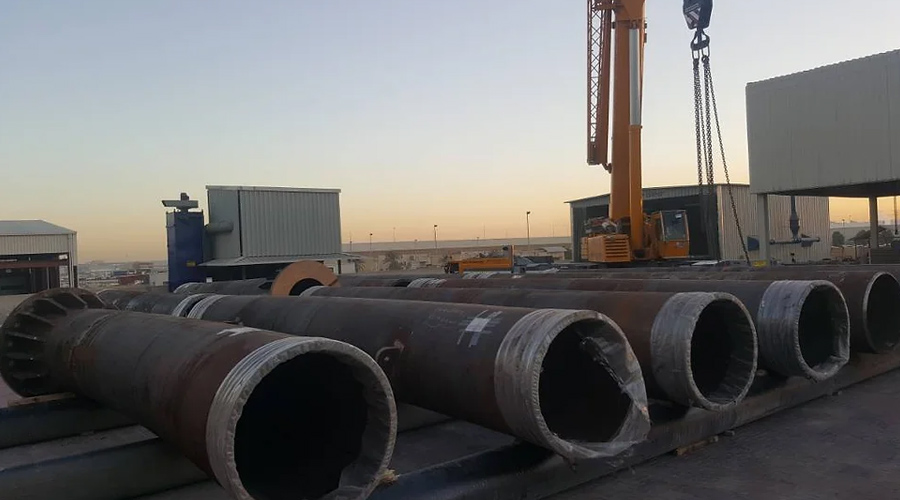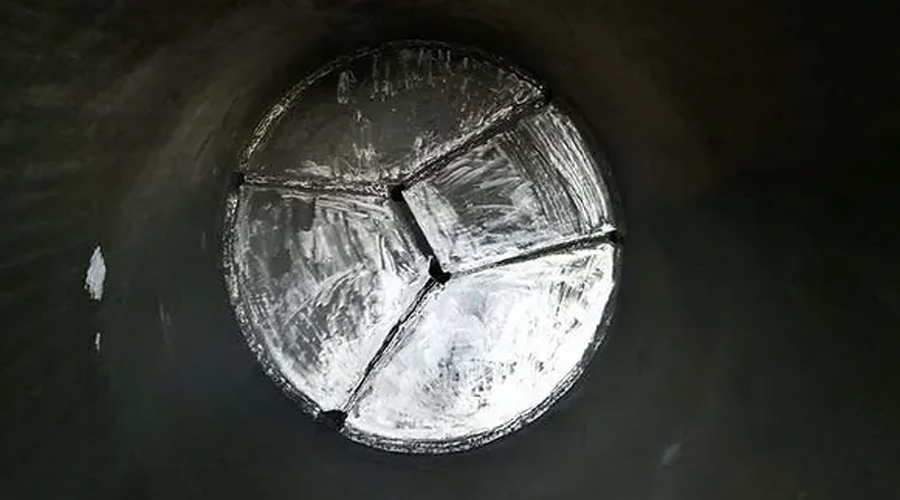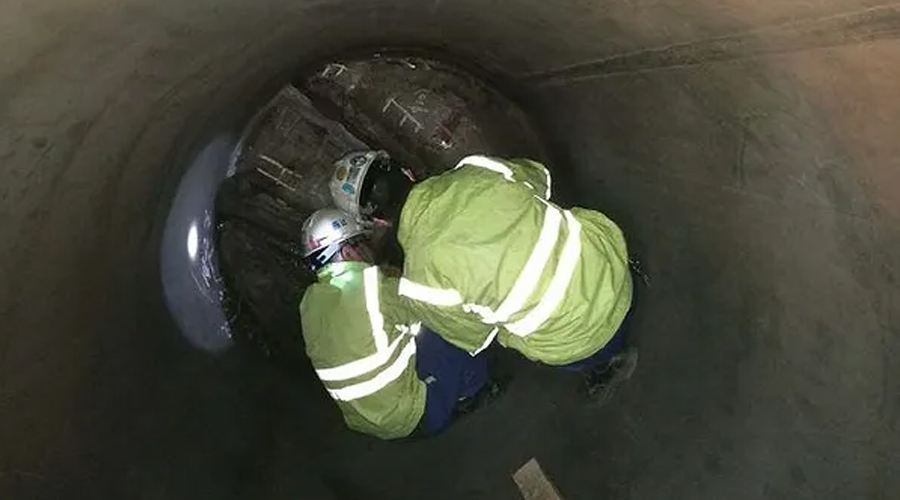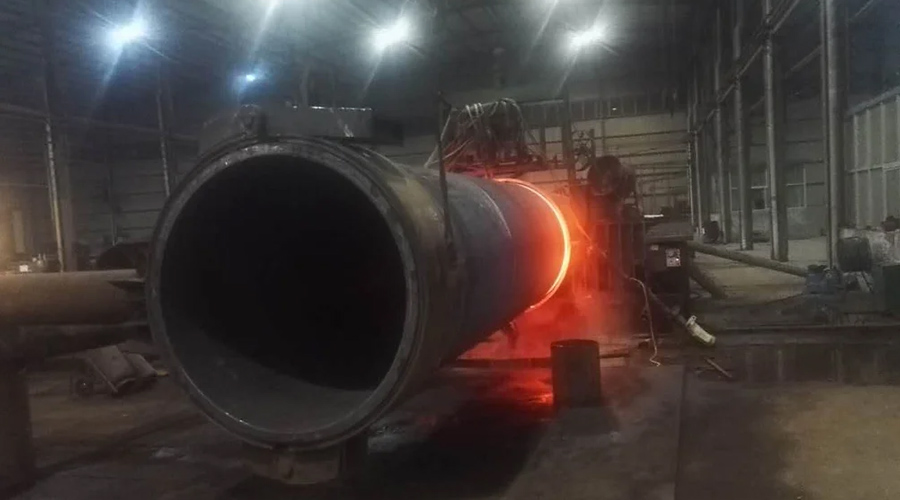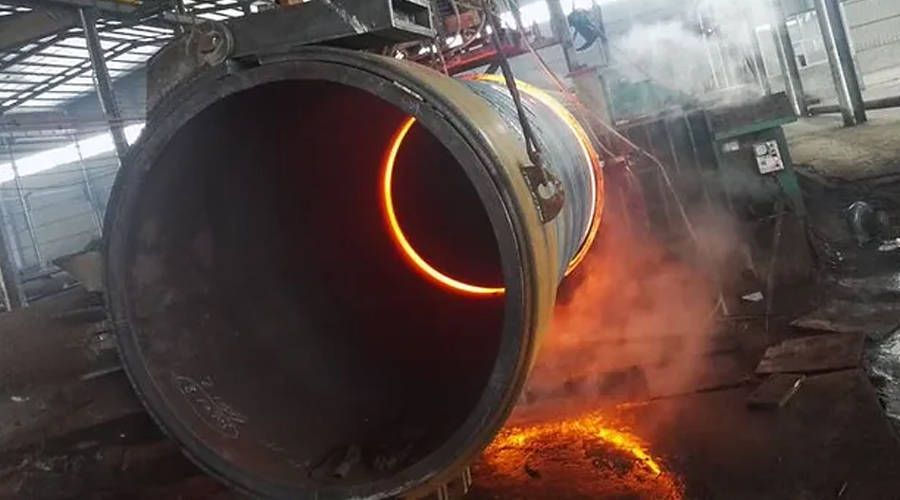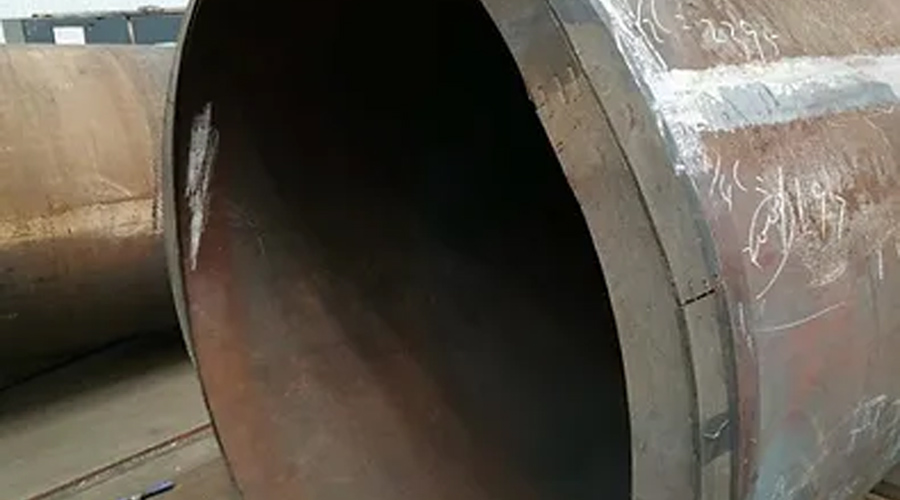Case Study
Al Ittihad Footbridge Arch - United Arab Emirates
ESC was awarded the scope of work for the specialty heavy steel fabrication of the heavy pipe arch for a new foot bridge over Al Ittihad Road, one of the busiest roads in Dubai.
Prior to this project, pedestrian crossing of the road in the Sharjah area was a serious hazard to the public. The Sharjah Urban Planning Council approved the unique footbridge design, which consists of a single arch that spanned over 92 metres length and 25 metres height. The arch was broken down into single 10 metre length pieces to accommodate less complex transport and easier handling. The arch would be constructed from ends and splice welded on site, where they would eventually meet in the centre section.
ESC Steel Structures during the tender phase submitted detailed documentation, showing full workflow, timescales, previous similar case studies and the necessary certification for CE marking of both raw materials and end product to BS EN 1090-1 and BS EN 1090-2 Execution Class 3. ESC’s engineers also effectively communicated with all the technical queries submitted both by the main contractor and the consultant in Europe. ESC had the advantage by having both offices and skilled personnel in the United Arab Emirates – the project country and the China – where the steel raw material was procured and the end product was fabricated .
Prior to production, ESC completed a comprehensive Inspection & Test Plan (ITP) with a breakdown of all the processes which included: welder qualification review, raw material inspection, component dimensional inspection, weld inspection and coating inspection. Strategic review, witness and certify hold points were incorporated for each of the stages. A 3rd party inspector was selected for the project as well by ESC and accepted by the client. After several iterations working with both the project client and consultant, the ITP was agreed and approved well before production started.
The steel bridge arch design required a 1524mm circular hollow section at a 60mm thickness at S355J2+N steel grade. Certain sections of the arch called for special steel grade S355+N Z25, where the Z25 required extra testing for through thickness ductility, important for special bridge components for both when high loads are transmitted through the thickness and also where large welds are specified on elements that are restrained against shrinkage. Few pipe mills in the world could produce this at such a low diameter to thickness ratio. The pipe section was also formed in a single piece using the JCOE process with a single longitudinal submerged arc weld. To bend the arch into a gradual curve required state of the art heat induction bending.


Heat induction bending is used by locally heating the section along the length whilst pivoting it around a preset bend radius. The heat has to be very localized to prevent the previously bent section from plastically deforming producing an uncontrolled distortion. Each pipe was carefully checked using both manual methods and laser positioning equipment to calculate whether the bent product was within the project specific tolerances. The pipe weld was also inspected before and after heat induction bending.
After the heat induction bending, the pipes were slotted to include the hanger plates for the suspension cables. The footbridge deck followed a snake bend trajectory to improve aesthetics. Due to this, the geometry of the hangar plates all followed various planes relative to the plane of the arch which made fitting a complex matter. Using cutting edge laser sensors and highly skilled fitters, precise slotting and fitting was able to be carried out. All plates required full penetration double sided butt welding on a very thick section. This required a well-planned WPS (Weld Procedure Specification) and AWS trained welders working in confined spaces both inside and outside the pipe. Worker health and safety was always the number 1 priority and all appropriate measures were taken to prevent any accidents or health hazards.
While the client had called for the coating to be applied in the United Arab Emirates, there was a special requirement to coat certain sections that were inaccessible after welding of the diaphragm hanger plates. ESC applied the coating of which was inspected and approved by ESC’s SSPC certified coating inspector.
ESC completed and packed the pipe arch segments to minimize any chance for damage during shipment. The pipe segments were successfully delivered on time in May 2017 and construction is scheduled to commence in Q3 2017.
Fabrication

